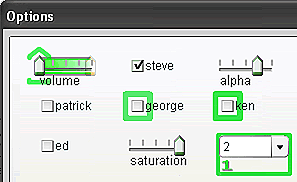phosphor
microsoft research
|
up patrick baudisch |
|
|
Sometimes users fail to notice a change that just took place on their display. For example, the user may have accidentally deleted an icon or a remote collaborator may have changed settings in a control panel. Animated transitions can help, but they force users to wait for the animation to complete. This can be cumbersome, especially in situations where users did not need an explanation. We propose a different approach. Phosphor objects show the outcome of their transition instantly; at the same time they explain their change in retrospect. Manipulating a phosphor slider, for example, leaves an afterglow that illustrates how the knob moved. The parallelism of instant outcome and explanation supports both types of users. Users who already understood the transition can continue interacting without delay, while those who are inexperienced or may have been distracted can take time to view the effects at their own pace. We present a framework of transition designs for widgets, icons, and objects in drawing programs. We evaluate phosphor objects in two user studies and report significant performance benefits for phosphor objects.
Try out the flash demo
|
Get the
Flash Player to see this player.
|
|
|
Baudisch, P., Tan, D., Collomb, M., Robbins,
D., Hinckley, K., Agrawala, M., Zhao, S., and Ramos, G. |
Related to drag-and-pop
